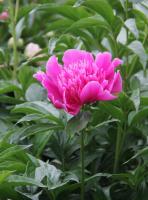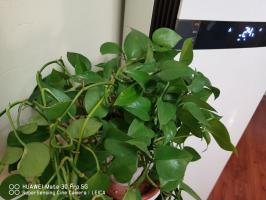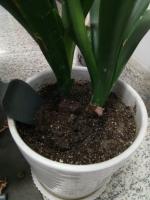What are the two primary water conducting cells in plants?
Plants require water for photosynthesis, growth, and survival. The water that plants need is transported through different tissues and cells, primarily the xylem and phloem. The xylem and phloem are two distinct types of vascular tissues that play different roles in the transportation of water within a plant. In this article, we will explore these two primary water conducting cells in plants.
Xylem: The Primary Water Transport System
Xylem is a type of vascular tissue in plants that primarily transports water and nutrients from the roots to the rest of the plant. The xylem is composed of two types of cells: vessel elements and tracheids.
Vessel elements are a type of cell that is found in angiosperms, a flowering plant. They are large, tube-like structures that connect end to end to form long, continuous conduits. Their walls are thin and contain perforations that allow water to flow easily from one vessel element to another.
Tracheids are another type of cell found in vascular plants. They are smaller and more elongated than vessel elements and are present in both angiosperms and gymnosperms. Tracheids have thickened walls and are tapered at both ends, with pits in their walls to allow water to move between adjacent cells.
The xylem is essential for the survival of plants since it transports water and dissolved nutrients from the roots to the rest of the plant. The water movement in xylem occurs due to differences in water potential between the soil and the leaves. Water moves from high to low water potential areas, so the water in the soil moves into the roots, then into the xylem, and ultimately into the leaves where it is used in photosynthesis.
Phloem: The Food Conducting Tissue
While the xylem transports water and minerals throughout the plant, the phloem transports the products of photosynthesis, such as sucrose, to various parts of the plant. The phloem is composed of two types of cells: sieve tube elements and companion cells.
Sieve tube elements are elongated, tube-shaped cells that have perforated ends. These perforations are known as sieve plates and allow for the movement of solutes between adjacent sieve tube elements. Companion cells are specialized cells that are connected to sieve tube elements via plasmodesmata, small channels between adjacent cells. Companion cells provide energy to the sieve tube elements to power the transport of sugars and other organic compounds.
The phloem operates by a process called translocation, whereby the phloem sap, which is composed of water, organic nutrients, and mineral ions, moves from the source to the sink, where the nutrients are utilized. In many cases, photosynthetic leaves serve as the source, while growing tissues serve as the sink.
Conclusion
In conclusion, the xylem and phloem are the two primary water conducting cells in plants. The xylem transports water and minerals from the roots to the rest of the plant, while the phloem moves the products of photosynthesis throughout the plant. Understanding the function and structure of these two primary water conducting cells in plants is key to comprehending the inner workings of plant growth and survival.

 how many times do yo...
how many times do yo... how many planted tre...
how many planted tre... how many pine trees ...
how many pine trees ... how many pecan trees...
how many pecan trees... how many plants comp...
how many plants comp... how many plants can ...
how many plants can ... how many plants and ...
how many plants and ... how many pepper plan...
how many pepper plan...
































